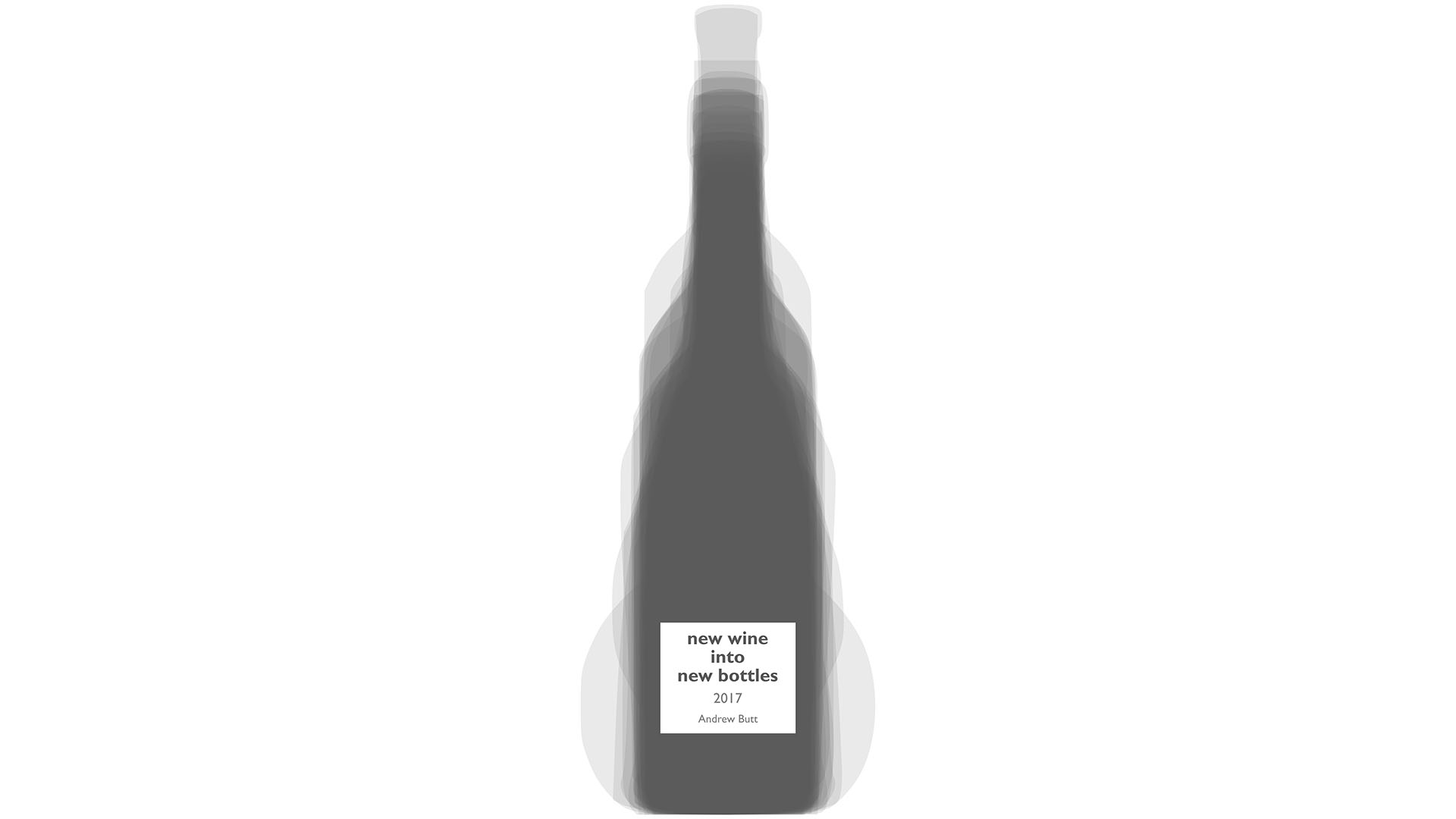New Wine into New Bottles is a brief exploration of the relationship between wine’s packaging and the experience of consuming wine. It examines how wine packaging has affected drinkers throughout wine’s history. One chapter, covering the standardisation of wine bottles and the resulting need to stand out, is reproduced below.

Pop
“Greater levels of consistency in bottle shape and size started to be achieved through mechanisation in the early 19th Century: a Bristol company called Rickett’s patented the first bottle-making machine in 1821. With more uniform physical packaging, there was a standardised blank space to fill with useful information and attractive decoration. The paper label provided an easier way of doing this than moulding designs in to the bottles themselves. Labelling had a long history: the jars in Tutankhamun’s tomb were labelled with details of the vintage year, vineyard and winemaker. However, the use of paper labels on individual bottles was new. In England the first labels would have been just hand-written notes to remind cellar-owners of the contents of their collection. When the ban on selling pre-bottled wine was lifted in 1860, British merchants adopted the custom of labelling their bottles, something already widely done in continental Europe.
With the expansion of the British empire, colonists took their fondness for wine to new parts of the world. Where conditions allowed, they planted grapes, in the US, Australia, New Zealand, and even India, among others. Other powers, notably France, similarly spread viticulture to their colonies. While much of this new production was consumed locally, some made it back to Europe, a continuation of the geopolitical influence on wine’s history.
In the late 19th and early 20th Century, the phylloxera mite cut through vast swathes of Europe’s vineyards, severely reducing the supply of wine. Prices rose, providing a new incentive for merchants to stretch, ‘improve’ or fake wine. In Bordeaux, Baron de Rothschild, owner of Château Mouton-Rothschild, introduced the innovation of bottling his wines at the winery. He convinced the other top-tier Bordeaux wine producers to follow suit, allowing the winery control over the bottling treatment and providing consumers a degree of assurance of the wine’s provenance. In part, this was communicated through the cork itself – by branding the cork with the winery’s crest or name, a feature was added that a consumer could inspect on opening to be sure the wine inside matched what was written on the label.
This idea of proving provenance may shed light on the origins of the now-familiar ritual of wine service in formal restaurants. Having presented the bottle, allowing the diner to check the label, the sommelier will open the wine and present the cork for inspection, before pouring a taste and, if the wine passes, filling the glasses. This ritual can seem awkward and redundant today, but in a time of fraudulent wines it may have emerged as an opportunity for a diner to gain assurance that the wine is as expected. The tasting element of the ritual is in part practical, to check the wine is not faulty, but also references customs in which the assembled company would wait until the host or most senior person present at a dinner had started before beginning to eat.
Mouton-Rothschild was also the winery that pioneered another innovation in wine packaging. In 1924 the Baron invited a poster artist, Jean Carlu, to design the label for his wine, introducing the idea of using the label as a space to visually differentiate a wine from its peers. The modern, Art Deco label reflected both the premium image the winery wished to promote and the modernising ideas of its owner. Today, wine labels have become a significant medium for communicating with consumers. Wines from Europe tend more towards traditional-looking labels, consistent with the romantic idea of a product perfected over generations and expressing a sense of history and of place. New World wines may have started by trying to emulate established styles, but their labels now more often demonstrate a new, separate and more modern identity.
The label is not the only space for differentiation, of course – the physical bottle provides a perhaps less obvious but more profound opportunity. Shape, colour and weight are all manipulated. Darker and heavier glass is used to convey a sense of expense and quality. Shape can be used to express origin – the 1980s saw a fashion for wine regions to adopt distinctive bottle shapes – or heritage – Château Haut Brion retains a shape reminiscent of older bottles.
All these elements – bottle, label, cork – were used together to construct and sell an image of wine. The traditions and heritage of European wineries were reflected in packaging selling an image of a crafted, artisanal product, rooted in time and place. Newer wine-producing regions, such as in Australia, sold a different conception of wine: something modern, clean, engineered. Wine as a type of drink had long had a social significance: in Britain the divide between working-class beer-drinkers and ruling-class wine-drinkers dating from the Norman conquest. The increasingly nuanced image conveyed by a bottle of wine made it an increasingly sophisticated social signifier, and the choosing of wine at a restaurant or the sharing of a bottle around a table of friends or family allow consumers to associate themselves with a certain image.
As wine’s physical packaging became increasingly standardised, the external features were developed as tools for product differentiation. Wine packaging was now something to be designed, rather than crafted or made, although the design focus was on the point of sale, rather than the point of consumption. Attractive labels, guarantees of authenticity, and small details of bottle shape were all used to advertise both the wine itself and a wider concept of what the wine represented. For consumers, the image created by these aesthetic elements of the product became a social signifier, a means of self-expression.”
